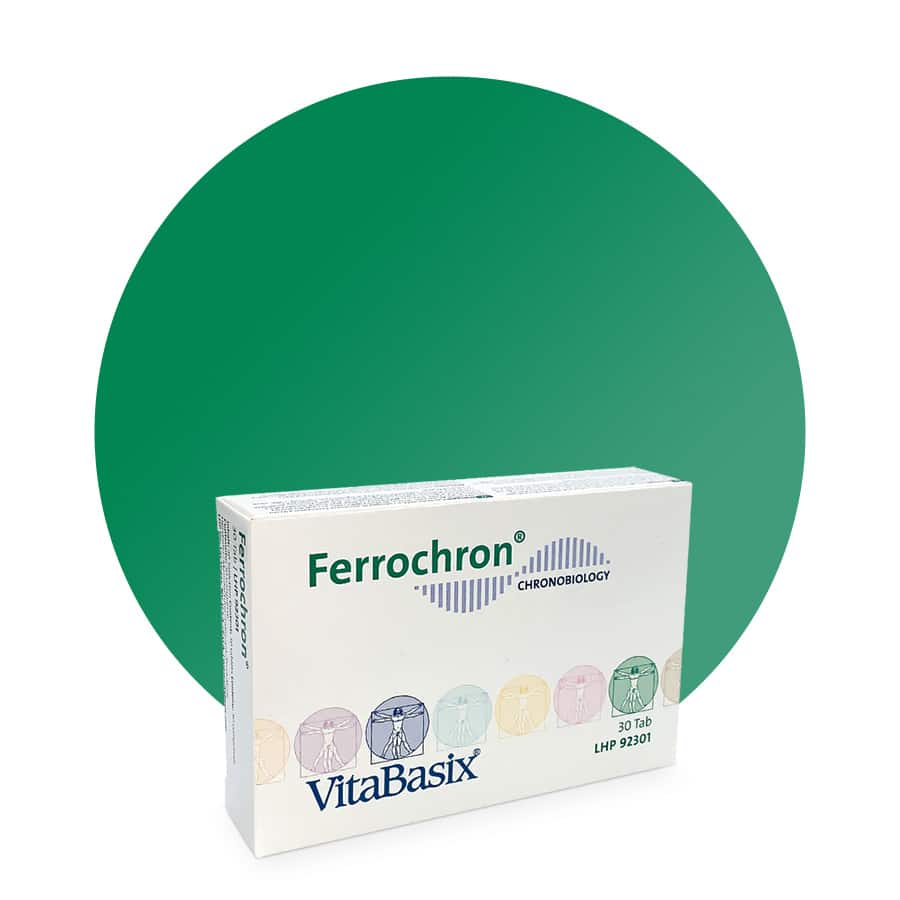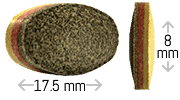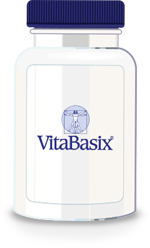Iron is mainly found in foods such as dark meat (especially liver, beef and pork). Even though some plant foods such as fruit, vegetables and cereal products contain iron, the body can absorb this substance much better from animal foods. Iron is an essential microelement that plays a role in numerous metabolic processes, especially those associated with the transport of oxygen and in the regulation of cell growth as well as its differentiation. Iron is involved in well over 100 metabolic processes in the body. Since the body cannot produce iron itself, it must be ingested through food. Iron deficiency is the most common nutrient deficiency worldwide. Iron deficiency develops gradually; it begins with a negative iron balance when dietary intake is insufficient to meet the body’s daily requirement.
Iron deficiency leads to reduced oxygen supply in the cells and thus leads to a reduction in physical performance, combined with fatigue and a weakened immune system. Paleness, dry skin, brittle fingernails and a tendency to obesity are also common consequences of iron deficiency.
Women, children and pregnant women are particularly at risk. It is estimated that 22 percent of women in industrialised countries are affected. Up to 47 percent of all school children worldwide also suffer from anaemia and 25 percent of them suffer from iron deficiency anaemia, the worst consequence of iron deficiency.
Iron, or more precisely iron salt, can exist in two forms: Haem iron and non-haem iron. The former is derived from haemoglobin and is found in foods of animal origin. The latter is found in plant products and is the form found in almost all dietary supplements or fortified foods.
There are a variety of factors that affect the body’s absorption of non-haematogenous iron; for example, many foods and beverages contain ingredients that interfere with iron absorption. Some diseases and certain medications can also inhibit iron absorption. In addition, different iron salts are absorbed differently in different sections of the gastrointestinal tract.
If one uses this knowledge, the various iron salts should be used in such a way that they are absorbed by the body at the right time in the right area of the gastrointestinal tract.
Iron bisglycinate is an iron salt that is absorbed well, especially in the stomach. Later, when it reaches the other parts of the intestine, the bioavailability of this iron salt is rather low. In the area of the duodenum and the upper or middle area of the small intestine, on the other hand, the iron sulphate salt in particular is absorbed without any problems. In contrast to other iron salts, the bioavailability of iron sulphate salt can be increased by taking vitamin C at the same time. A third iron salt, iron pyrophosphate, is primarily absorbed by the body in the ileum.
By combining three iron salts, the amount of iron sulphate, the salt that is often responsible for intestinal blockage at higher levels, is reduced to an absolute minimum, maximising tolerance while ensuring high bioavailability of the total iron content.
There are certain groups of people in whom iron deficiency is more common and who should pay particular attention to an iron-rich diet, e.g. women who menstruate heavily, but also pregnant and breastfeeding women.
To reduce the risk of progressive iron deficiency in healthy people, the recommended daily dietary iron dose is about 11 mg for infants between seven and twelve months, 7 mg for children between one and three years, 8 – 11 mg for children four years and older, 8 mg for men, 15 – 18 mg for adult women of childbearing age and at least 27 mg for pregnant women.
If the absorption of these nutrients through the diet is not sufficient or if there is an increased need, these nutrients can be supplemented through special food supplements. Chronobiologically oriented combination products take into account the fact of different bioavailability. As a general rule, iron salt supplementation with any salt should be taken in the late afternoon, approx. 120 – 30 minutes before the last meal.



 Chronobrands
Chronobrands


Reviews
There are no reviews yet.